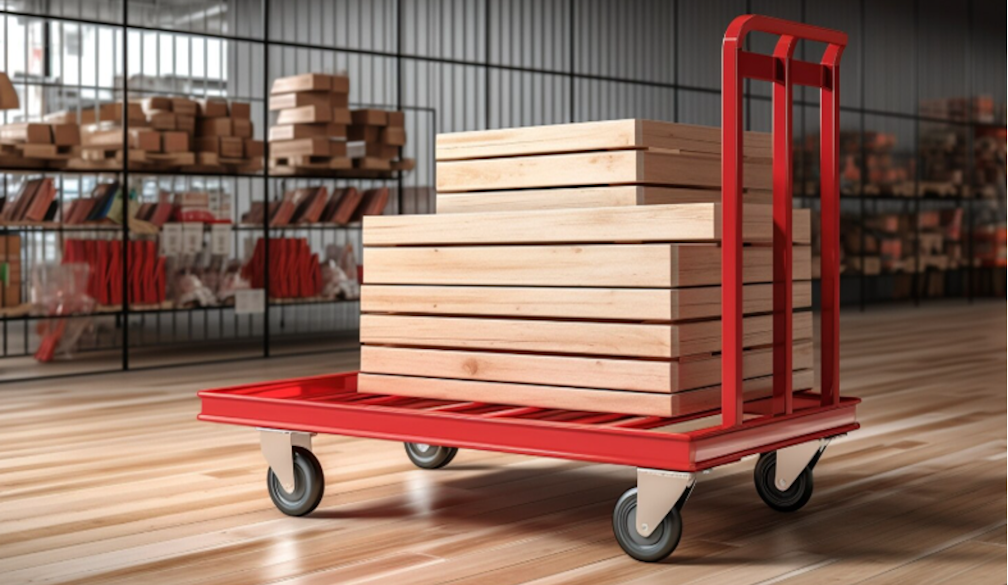Why Heavy Duty Moving Dollies Are Essential for Safe Transport in Australia

Moving heavy or bulky items can be challenging, especially when it involves transporting goods across warehouses, offices, or even during residential relocations. In Australia, where industries like construction, manufacturing, retail, and logistics play a vital role, having the right equipment to handle these tasks is crucial. One such tool that has become indispensable is the heavy-duty moving dolly. These simple yet powerful transport devices are designed to reduce physical strain, improve efficiency, and ensure safety when shifting heavy loads.
The Role of Moving Dollies in Transport
A moving dolly is a platform with wheels that enables workers to easily move large or heavy objects. While standard dollies are suitable for smaller loads, heavy-duty moving dollies are specifically designed for high-capacity use, capable of supporting significant weight while maintaining stability. In the Australian market, businesses often require moving equipment that can handle everything from industrial machinery to oversized office furniture.
Heavy-duty moving dollies come in various designs, including flat platform dollies, furniture dollies, and appliance dollies. Each type serves a different purpose, but they all share one common benefit: making transportation safer and faster.
Why Heavy Duty Matters
Not all items can be managed with regular transport tools. Imagine trying to shift a large refrigerator, an industrial printer, or even bundles of construction materials using just manpower. The risk of injury and damage becomes high. Heavy-duty dollies are engineered with stronger frames, reinforced wheels, and stable platforms that can withstand demanding tasks.
For example, in Australia’s logistics industry, warehouses often handle pallets of goods that need to be relocated from one section to another. Without dollies capable of carrying heavy loads, workers would struggle with delays and safety hazards. By investing in heavy-duty moving dollies, companies can ensure smooth workflows while protecting their employees from unnecessary strain.
Safety Benefits of Heavy-Duty Dollies
One of the biggest advantages of using heavy-duty dollies is workplace safety. Manual lifting of heavy objects can lead to back injuries, muscle strains, and accidents caused by dropped items. In Australia, where workplace safety regulations are strict, employers are responsible for minimising risks to their workers.
By providing moving dollies, businesses reduce the likelihood of injuries. Dollies allow workers to push or pull loads rather than lift them, which significantly reduces the risk of strain. In addition, heavy-duty dollies often feature non-slip surfaces and swivel wheels, giving operators greater control when manoeuvring through tight spaces.
For example, in hospitals or aged care facilities, linen trolleys and heavy laundry loads are common. Using heavy-duty dollies in these environments not only protects staff but also ensures that services continue without interruption due to workplace injuries.
Efficiency in Workplaces
Beyond safety, efficiency is another key reason why heavy-duty moving dollies are essential in Australia. In sectors such as retail, hospitality, and warehousing, time is a valuable resource. Employees who spend less time struggling with heavy loads can complete tasks more quickly, leading to improved productivity.
Consider a commercial kitchen receiving large deliveries of bulk food items. With heavy-duty dollies, staff can unload and transport goods in fewer trips, saving both time and effort. Similarly, in construction sites, dollies can help move building materials safely across uneven ground, keeping projects on schedule.
Applications Across Different Industries in Australia
The versatility of heavy-duty dollies makes them useful in a wide range of industries:
- Warehousing and Logistics: For transporting pallets, boxes, and equipment efficiently.
- Hospitality: To move bulk deliveries, catering supplies, or heavy kitchen appliances.
- Healthcare: To carry laundry, medical equipment, or supplies in large facilities.
- Construction: To shift construction materials such as timber, cement bags, or tiles.
- Residential Moving: For safely relocating heavy household items such as wardrobes, beds, and refrigerators.
Each of these industries benefits from the added safety and efficiency that heavy-duty moving dollies provide.
Choosing the Right Heavy Duty Dolly
When selecting a dolly, businesses and individuals should consider the type of loads they will be moving. For example, furniture dollies are designed with wide platforms and non-slip grips to handle bulky items, while appliance dollies include straps and frames to secure large machines. The weight capacity, wheel type, and material of the dolly are also important factors.
In Australia, many suppliers provide options specifically tailored to different industries. For warehouses, steel-framed dollies with high load-bearing wheels are ideal. For hospitals or hospitality settings, lightweight but strong aluminium dollies with smooth-rolling wheels may be a better choice.
Long-Term Value of Heavy Duty Dollies
Although investing in heavy-duty dollies may seem like a small addition to workplace equipment, the long-term value is significant. They help prevent costly workplace injuries, reduce downtime caused by accidents, and improve overall productivity. In many cases, the investment in quality moving dollies pays for itself through reduced labour costs and increased efficiency.
Moreover, Australian businesses that prioritise workplace safety and efficiency often see better staff morale, as employees feel supported and less burdened by physically demanding tasks.
Final Thoughts
Heavy-duty moving dollies may seem like simple tools, but their role in ensuring safe and efficient transport is undeniable. In Australia’s diverse industries, from logistics to healthcare, they provide a practical solution for handling heavy loads without compromising safety or productivity. By investing in the right type of dolly, businesses and individuals can streamline their operations, protect their workforce, and achieve smoother, safer transport.







